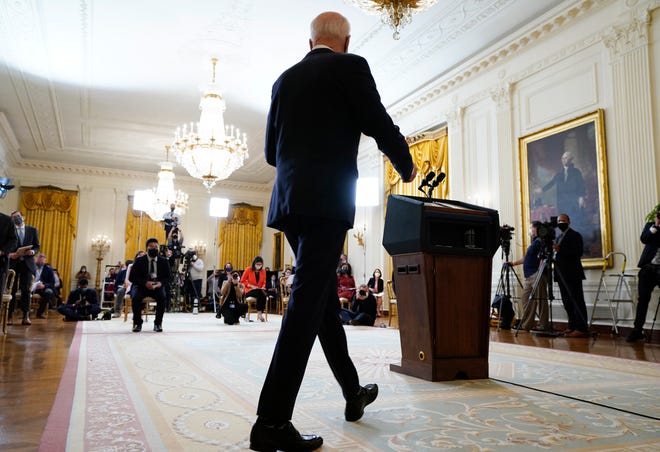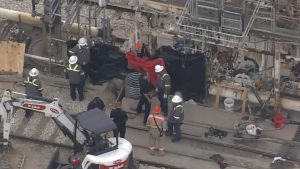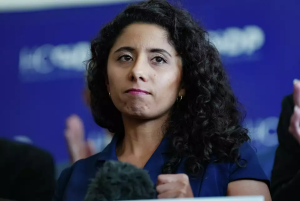President Joe Biden arrived in the East Room on Thursday for his first White House news conference with an agenda: the progress his administration has made in addressing the coronavirus pandemic and its economic repercussions.
But news beyond his control kept interrupting.
The room of socially distanced reporters had other topics on their minds. They repeatedly pressed him about his administration’s struggle to deal with an influx of migrants on the southern border. Two asked about the Senate filibuster that threatens to stall his legislative agenda. One asked about provocative missile firings by North Korea and another about fraught relations with China.
The predictable disconnect between his message and their questions was presumably one reason Biden waited until Day 65, later than any other modern president, to convene his first formal news conference. (It’s also a reason journalists believe the gatherings are important to hold, although it’s not entirely clear whether voters feel the same way.)

In an opening statement, Biden announced he was doubling his initial goal for COVID-19 vaccinations, now vowing to deliver 200 million injections to Americans during his first 100 days in office. He touted the impact of the $1.9 trillion relief package he has signed into law, which is already putting money in bank accounts and boosting estimates of economic growth. He noted that new unemployment claims had dropped.
“Help is here, and hope is on the way,” he said.
But perhaps it was a sign of his success on those fronts that not a single reporter mentioned either COVID-19 or the economic recovery. Instead, he was asked if he would meet former President Trump’s deadline to withdraw all U.S. troops from Afghanistan by May 1 – probably not, Biden said, but he suggested they would be out within a year – and about Republican efforts to enact restrictions on voting.
“This makes Jim Crow look like Jim Eagle,” he said of the hundreds of bills Republican state legislators have submitted to regulate voter access. His voice rising, he called the efforts “un-American” and “despicable.”
There were even two follow-up questions about whether he plans to run for a second term. He replied that he expected to, and with Vice President Kamala Harris on his ticket, although he cautioned that 2024 was distant and he was “a great respecter of fate.”
A majority of the questions dealt with immigration and the border, especially about the treatment of an influx of unaccompanied children. His administration has seemed unprepared to deal with the issue despite early signs it was going to pose a problem. Biden dismissed the assertion that his policies had encouraged families in Central America to send their children on the dangerous journey north, but he also rejected the notion that he should adopt a harder line to stem the flow.
“Well, look,” Biden said. “The idea that I’m going to say – which I would never do – when an unaccompanied child ends up (at) the border, we’re just going to let them starve to death and stay on the other side? No previous administration did that either – except Trump. I’m not going to do it. I’m not going to do it.”
He was, well, Biden-esque. It was the longest extemporaneous exchange of his presidency, stretching just past an hour. He expressed empathy, spoke conversationally, and twice caught himself going on too long and said he would stop – generally an observation public officials don’t say out loud. He didn’t use a teleprompter, but in responding to questions on Afghanistan and China he did seem to be reading from notes, presumably an effort to get each word precisely right on a sensitive issue of diplomacy.
He wasn’t always crisp, and his reference to “Jim Eagle” sparked fruitless Google searches to understand the reference – perhaps the Biden counterpart to Trump’s mystifying 2017 tweet about “covfefe.” But he was focused and responsive, countering jibes by his harshest critics that at age 78 he had lost a step.
The contrast with his predecessor was hard to miss. Trump was often deliberately provocative when he talked with reporters, reveling in barbed exchanges and sometimes attacking the intelligence and patriotism of those asking questions. Biden was low-key, even suggesting at one point that perhaps he was providing more details about policy than reporters wanted to hear.
When a reporter from Univision asked about the influx at the border, he thanked her for her reporting there.
Near the end, when no one had asked about his next big legislative priority, he pivoted from a question about gun control to a promotion for the sweeping economic recovery bill he plans to unveil Friday in Pittsburgh. When no one asked the question he wanted, he answered it anyway.
“The next major initiative … is to rebuild the infrastructure, both physical and technological infrastructure of this country, so that we can compete and create significant numbers of really good-paying jobs, really good-paying jobs,” he said. “There’s so much we can do.”
Source: www.usatoday.com









